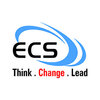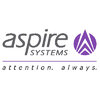Data Migration Consultant
Data Migration Consultant Interview Questions and Answers

Asked in Deloitte

Q. Explain how to migrate an on-premise application to the cloud.
Migrating on premise application to cloud involves assessing current infrastructure, selecting appropriate cloud provider, planning migration strategy, testing and executing the migration.
Assess current infrastructure and application dependencies
Select appropriate cloud provider based on requirements (e.g. AWS, Azure, Google Cloud)
Plan migration strategy including data migration, application migration, and testing
Execute migration plan ensuring minimal downtime and data loss
M...read more

Asked in Zenoti

Q. How would you handle null data values in joins?
Null data values in joins can be handled using COALESCE function or LEFT JOIN with IS NULL condition.
Use COALESCE function to replace null values with a specified default value
Use LEFT JOIN with IS NULL condition to include rows with null values in the result set
Consider using CASE statements to handle null values based on specific conditions

Asked in Yokogawa

Q. What is the Syniti ADM data flow?
Syniti ADM data flow is a structured process for efficient data migration and management.
Data Assessment: Evaluate existing data quality and structure before migration.
Data Mapping: Define how source data translates to target systems.
Data Transformation: Cleanse and format data to meet target requirements.
Data Loading: Transfer data into the target system using automated tools.
Validation: Ensure data integrity and accuracy post-migration.

Asked in Yokogawa

Q. What is the data migration process flow?
The data migration process flow involves planning, extraction, transformation, validation, and loading of data.
1. Planning: Define scope, objectives, and timeline for the migration project.
2. Data Extraction: Retrieve data from the source system, e.g., exporting data from a legacy database.
3. Data Transformation: Cleanse and format data to meet the requirements of the target system, e.g., converting date formats.
4. Data Validation: Ensure data integrity and accuracy through t...read more

Asked in Deloitte

Q. Explain how you have used Linux.
I have used Linux extensively for data migration tasks.
Performed data migration tasks using Linux command line tools
Utilized shell scripting to automate data migration processes
Worked with various file systems on Linux for data storage and transfer
Configured and managed servers running on Linux for data migration purposes

Asked in Infosys

Q. How is data migration done?
Data migration involves transferring data from one system to another while ensuring data integrity and accuracy.
Assess the source and target systems to determine the scope of migration
Extract data from the source system and transform it to fit the target system
Load the transformed data into the target system and validate it for accuracy
Perform testing and reconciliation to ensure data integrity
Implement post-migration activities such as data archiving and cleanup
Data Migration Consultant Jobs




Asked in Mu Sigma

Q. What is the order of execution of an SQL query?
SQL query order of execution determines the sequence in which different parts of a query are processed.
SQL query is parsed and checked for syntax errors
Query optimizer creates an execution plan
Data is retrieved from tables based on the execution plan
Filters and joins are applied to the retrieved data
Aggregations and calculations are performed on the filtered data

Asked in Infosys

Q. Types of backups
Types of backups include full, incremental, differential, and snapshot.
Full backup: copies all data
Incremental backup: copies changes since last backup
Differential backup: copies changes since last full backup
Snapshot backup: captures a point-in-time image of data
Examples: Veeam, Acronis, Backup Exec
Share interview questions and help millions of jobseekers 🌟


Asked in Q2 Software

Q. Explain the difference between 'continue' and 'break' statements.
In data migration, 'continue' means to proceed with the migration process, while 'break' means to stop or pause the migration.
Continue: Proceed with the migration process without interruption.
Break: Stop or pause the migration process.
Example: If there is an error in the data migration process, you may choose to 'break' and investigate before continuing.

Asked in TCS

Q. Joins and its types
Joins are used to combine rows from two or more tables based on a related column between them.
Types of joins include INNER JOIN, LEFT JOIN, RIGHT JOIN, and FULL JOIN.
INNER JOIN returns rows when there is at least one match in both tables.
LEFT JOIN returns all rows from the left table and the matched rows from the right table.
RIGHT JOIN returns all rows from the right table and the matched rows from the left table.
FULL JOIN returns rows when there is a match in one of the tabl...read more
Interview Questions of Similar Designations
Interview Experiences of Popular Companies








Reviews
Interviews
Salaries
Users

















